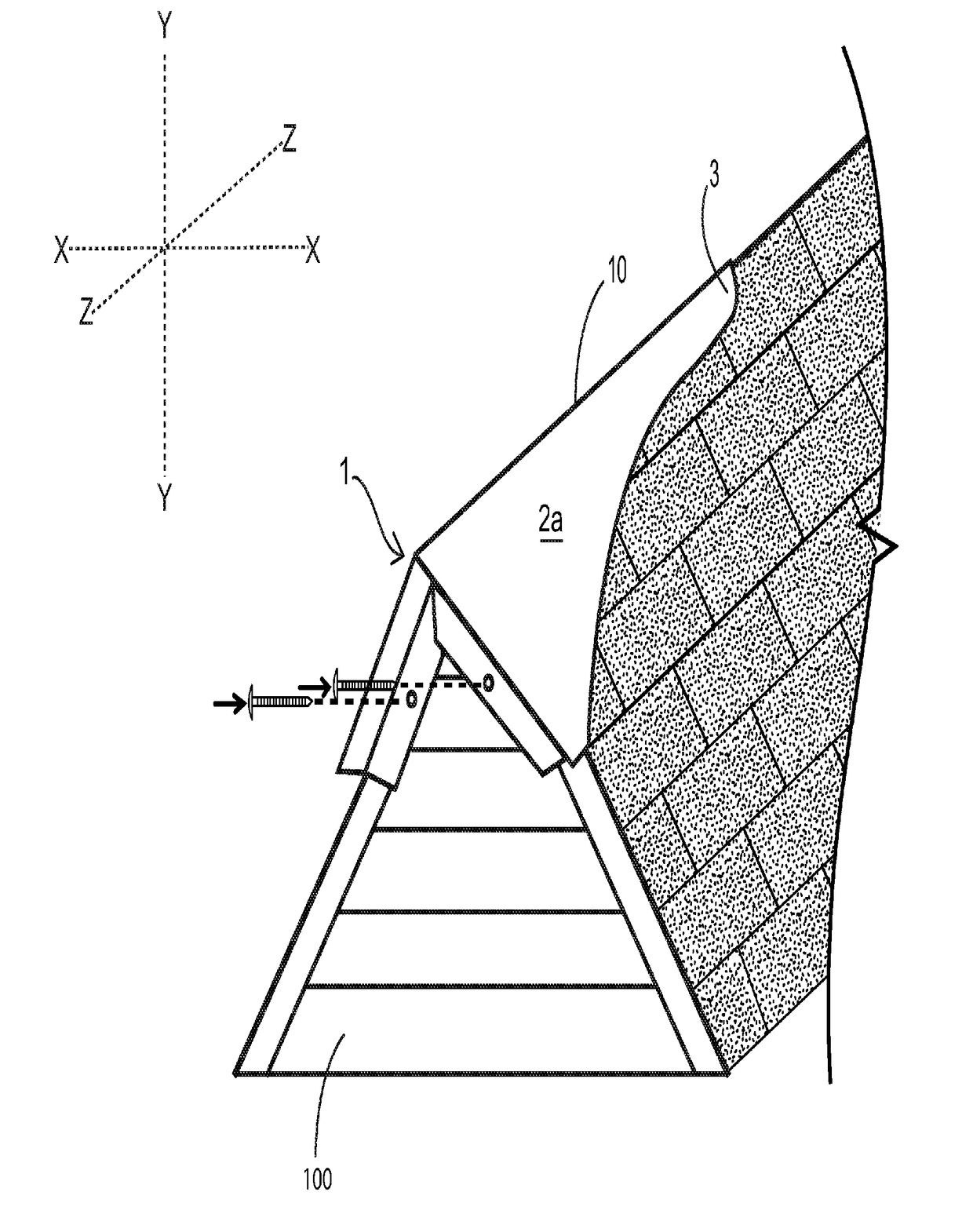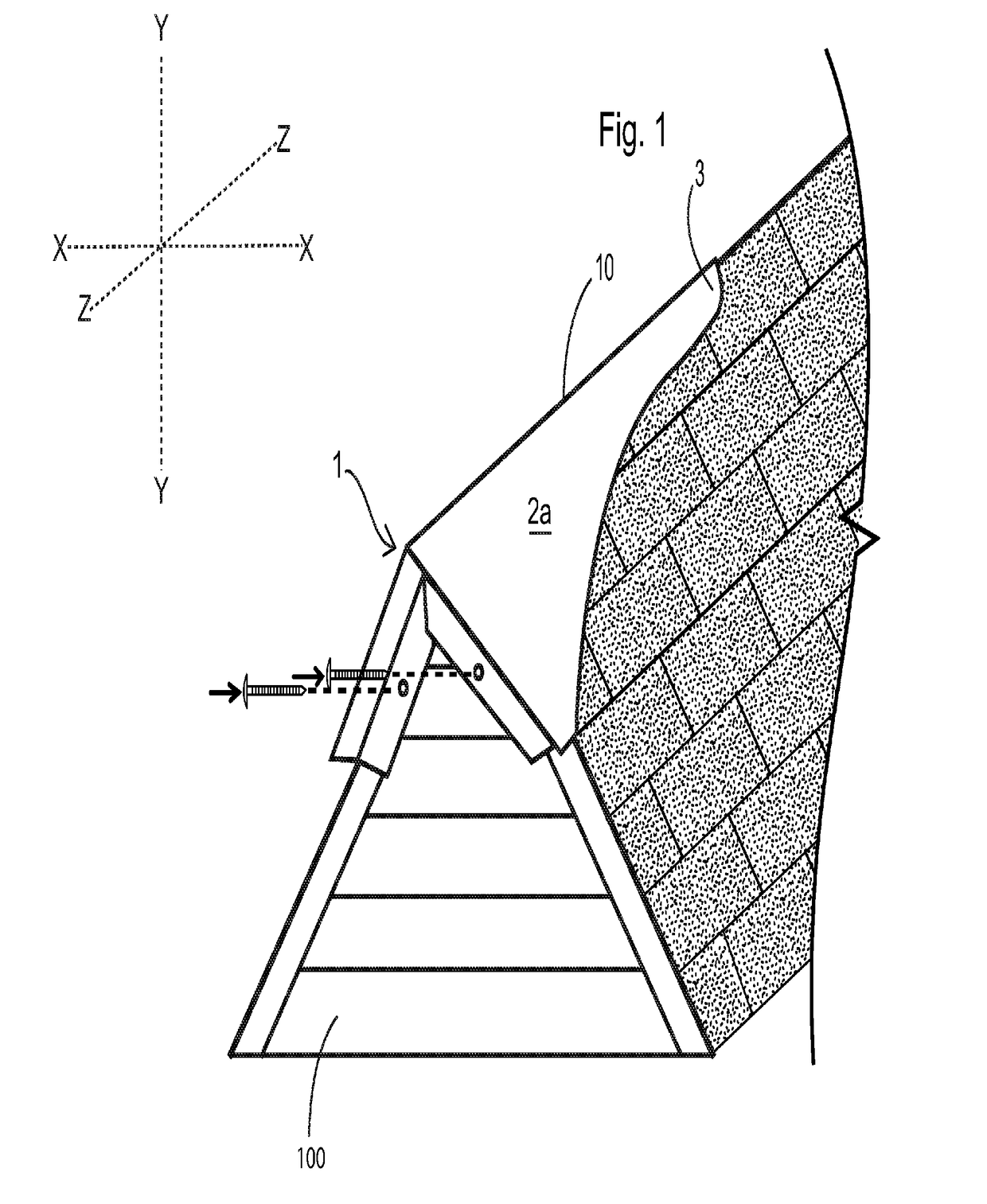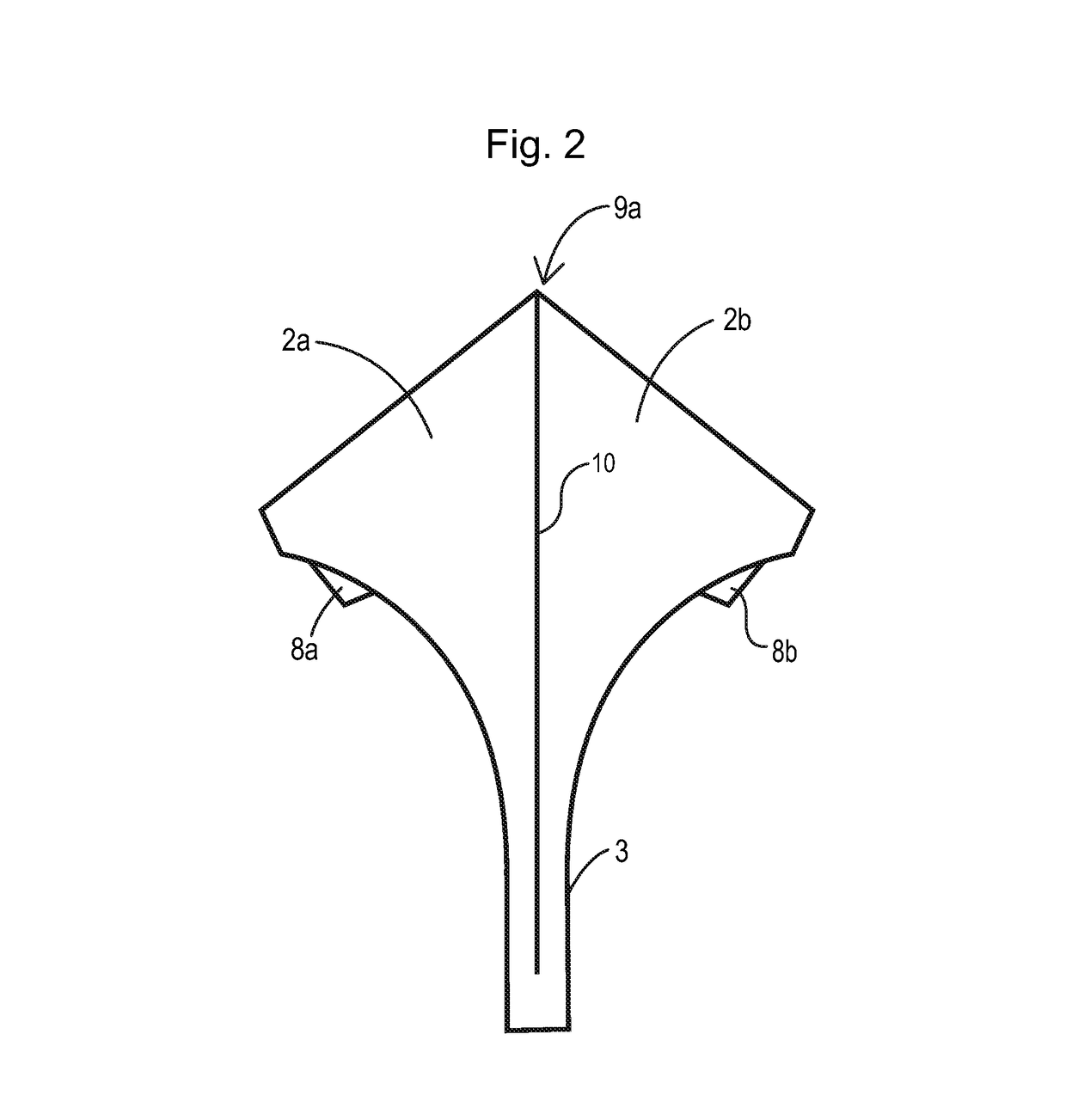Method of protecting gable end of roof ridge
a technology of roof ridge and gable end, which is applied in the direction of roofs, construction, building components, etc., can solve the problems of increasing the risk of damage, and increasing the cost of roof construction, so as to facilitate the clockwise turning of the roof ridge end cap
- Summary
- Abstract
- Description
- Claims
- Application Information
AI Technical Summary
Benefits of technology
Problems solved by technology
Method used
Image
Examples
Embodiment Construction
[0018]Roof ridge end caps of the invention each comprise a peak formed by angularly connected side panels, opposed and adjustable face panels that may be moved apart or together to adjust the angle at the peak and a tail portion, each of which provides a further covering function to the area around a roof peak. The roof ridge end cap is formed with an acute angle between the edges of the front side walls that form the peak of the roof ridge end cap. The side walls overhang and overlap the side wall of a roof gable. The devices characterized in this disclosure present a further improvement over the device described and claimed in U.S. Pat. No. 9,631,368. The presently claimed device comprises two side panels that are curved and tapered from the front edges thereof toward the back, to form a tail portion. These same side panels are conjoined at their upper edges to form a peak co-extensive with a ridge, and the front edges of the side panels taper backward down from this peak so that ...
PUM
 Login to View More
Login to View More Abstract
Description
Claims
Application Information
 Login to View More
Login to View More - R&D
- Intellectual Property
- Life Sciences
- Materials
- Tech Scout
- Unparalleled Data Quality
- Higher Quality Content
- 60% Fewer Hallucinations
Browse by: Latest US Patents, China's latest patents, Technical Efficacy Thesaurus, Application Domain, Technology Topic, Popular Technical Reports.
© 2025 PatSnap. All rights reserved.Legal|Privacy policy|Modern Slavery Act Transparency Statement|Sitemap|About US| Contact US: help@patsnap.com



